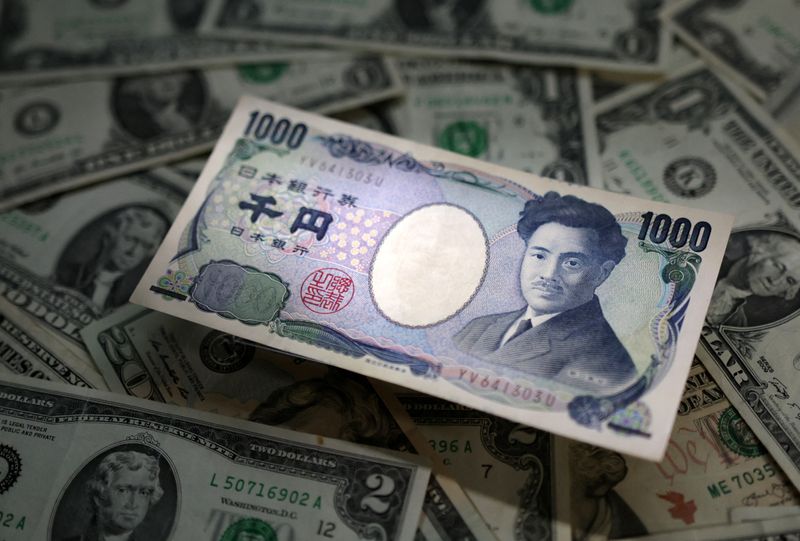By Rae Wee
SINGAPORE (Reuters) -The yen languished near a three-month trough on Tuesday as the loss of a parliamentary majority for Japan’s ruling coalition in weekend elections raised uncertainty about the nation’s political and monetary outlook.
Elsewhere, the dollar firmed near its recent high ahead of major U.S. data releases later in the week that could determine the path for Federal Reserve policy.
The yen was last 0.28% higher at 152.86 per dollar, after having slumped to a low of 153.885 on Monday – its weakest level since July – following Japan’s national election on Sunday that left the make-up of the country’s future government in flux.
Japan’s Finance Minister Katsunobu Kato reiterated on Tuesday that the authorities would be vigilant to foreign exchange moves, including those driven by speculators.
A period of wrangling to secure a coalition is likely after Japan’s Liberal Democratic Party and its junior partner Komeito won 215 lower house seats to fall short of the 233 needed for a majority.
“All up, the risks appear skewed to looser fiscal policy than otherwise under the new government,” said Carol Kong, a currency strategist at Commonwealth Bank of Australia (OTC:CMWAY).
“Together with solid U.S. economic data and stronger prospects of a Trump win, political uncertainty in Japan can pressure dollar/yen higher in coming weeks.
“Heightened financial market volatility might also encourage the Bank of Japan (BOJ) to keep its policy interest rate unchanged for longer than we currently expect.”
Against the euro and sterling, the yen similarly struggled near a three-month low and last stood at 165.24 and 198.12, respectively.
The BOJ announces its monetary policy decision on Thursday, where expectations are for the central bank to keep rates on hold.
Ahead of the decision, the head of a kingmaker opposition party said on Tuesday that the BOJ should avoid overhauling its ultra-loose monetary policy now.
DOLLAR STRENGTH
The greenback steadied on Tuesday and traded in a tight range as investors were hesitant to take on new positions ahead of the data releases, with the dollar index last little changed at 104.29.
It was poised for a 3.6% gain for the month, its best performance in 2-1/2-years.
The euro was flat at $1.0811, while sterling eased 0.07% to $1.2963.
A raft of economic data underscoring the resilience of the U.S. economy has bolstered the greenback over the past month, as has increasing market bets of a win by Republican candidate Donald Trump at next week’s U.S. presidential election.
Trump’s policies on tariffs, tax and immigration are seen as inflationary, thus negative for bonds and positive for the dollar.
Focus is also on a reading on September’s U.S. core personal consumption expenditures price index – the Fed’s preferred measure of inflation – which comes due on Thursday, followed by the closely watched nonfarm payrolls report on Friday.
“Friday’s employment numbers and whether PCE prints at 0.2% or 0.3% are going to be pretty important, so although the election is probably the biggest single factor for next week, we could still have a price adjustment… depending on what those numbers show at the end of the week,” said Ray Attrill, head of FX strategy at National Australia Bank (OTC:NABZY).
In other currencies, the New Zealand dollar fell 0.13% to $0.5973, while the Australian dollar slid to its weakest level in over two months at $0.65602.
“In terms of G10, the Aussie probably is the standout currency that could suffer if we did see a broader EM (emerging market) gut negative reaction next week if we do see news that Trump has won,” said Attrill.
China’s yuan similarly weakened to its lowest level in over two months in both the onshore and offshore markets.
The onshore unit bottomed at 7.1419 per dollar, while its offshore counterpart hit a trough of 7.1594.

